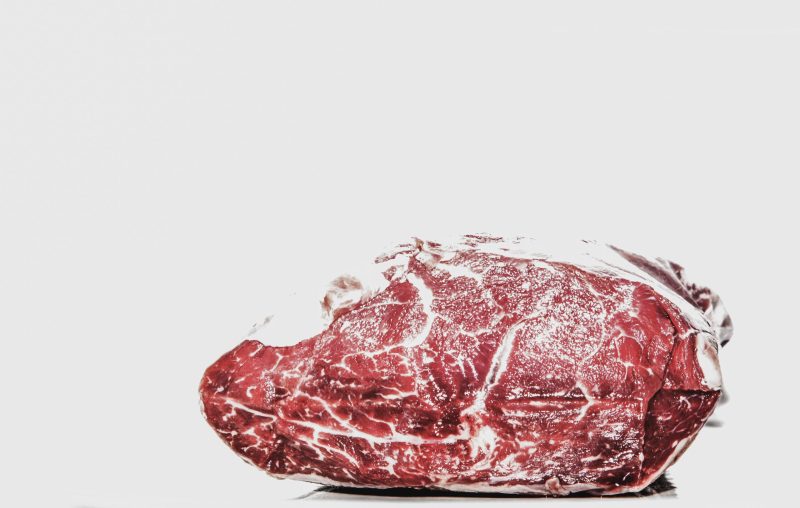You’ve probably seen the word “Angus” when you’re grocery shopping or dining out. Marketing is to blame for the public’s misconceptions about Angus beef. Prices for Angus beef are 10% higher than those of other USDA beef implying that it is of superior quality. The truth is Angus isn’t a cut of beef, per se, it’s simply the breed name cattle the beef is derived from like the Japanese Wagyu or Kobe. You’re probably thinking, so what’s the difference between a regular cow and an Angus cow?
Angus Cattle
Angus beef comes from the Aberdeen Angus cow. It is the most prevalent beef producing breed in the United States. They can be differentiated from other cattle breeds by their appearance. The Black Angus is hornless (polled) and sports a black hide. Originally from Scotland, these cows were bred by Hugh Watson in the mid-1800s. His purpose was to maximize the quality of their black hides, but they turned out to be a profitable beef cattle. Their muscular and medium build sets them apart from regular continental cattle breeds. In addition, breeding Angus cattle was significantly easier and faster considering the low rate of birth complications and short gestation period.

Marbling and Beef Grading
Another factor in the farmers’ preference for Angus cows is their growth rate. Since they grow faster than other breeds, Angus beef cattle have a large amount of intramuscular fat or fat found in between muscle fibers. This intramuscular fat distribution is referred to as marbling and is associated with the tenderness, juiciness, and flavor of the beef. A piece of steak with marbling would be considered to be higher quality than a steak with less marbling. Does this mean that Angus is more superior to a leaner piece of non-Angus beef? Not necessarily, unless labeled specifically as “Certified Angus Beef”.
While Angus grades higher on the USDA scale because of its better marbling, you shouldn’t purchase your beef JUST because it is labeled Angus. Why? Some beef labeled “Angus” isn’t from the Angus cattle. To explain, there is no genetic testing done to say what exact breed the beef came from. If the beef comes from a cattle that is 51% Black Angus, then the beef can be classified as Angus. In other words, the beef you purchased that is labeled Angus, may not be 100% from Angus cattle. To add, since the Black Angus is most commonly used in the United States, technically almost all US beef is at least partly Angus. Angus is oftentimes just a label and not always an indicator of quality.

Angus Beef Quality
Most of the Angus beef produced in the United States is associated with the American Angus Association, an organization created to increase the awareness of Angus beef. They are partially responsible for the reputation that Angus beef as today. In 1978, they created the brand Certified Angus Beef. Those at Certified Angus Beef work to improve the cattle in which their beef is derived through extensive grading including genetic testing, ultrasound technologies, and classic breeding registries. Certified Angus Beef is then graded by the USDA and must be in the top grades, Prime and Choice. If you want to buy Angus cattle beef, make sure the package says: “Certified Angus Beef.”
Bottom Line
Now that you’ve digested everything there is to know about Angus beef (pun intended), what is the real difference between regular beef and Angus? Since Angus beef has more marbling, the fat is more evenly distributed resulting in juicier and more tender meat than regular beef. Also, Angus beef has more fat and much less lean meat than regular beef. So if you don’t mind beef with extra fat, then Angus is the way to go. But just be mindful that not all beef labeled Angus is created equal, so look for the “Certified Angus Beef” label!
